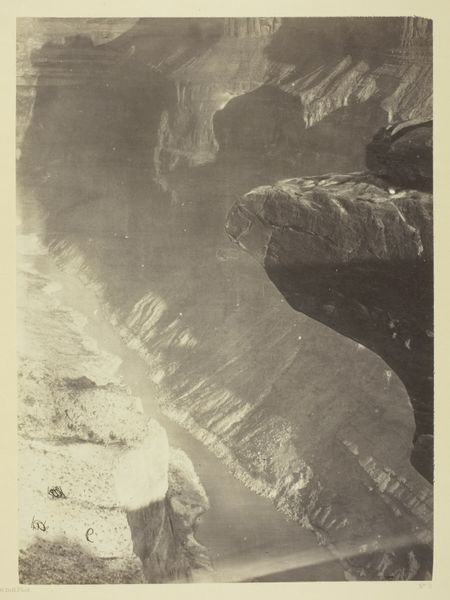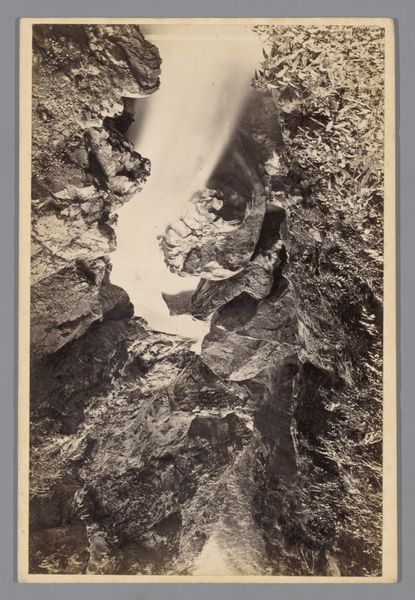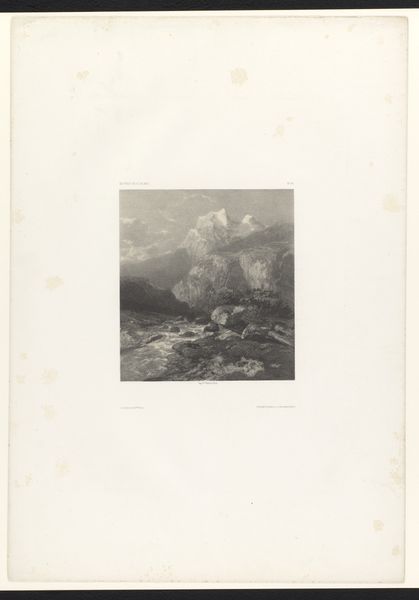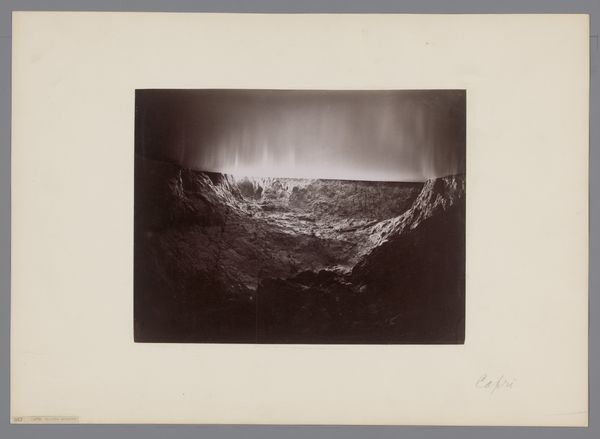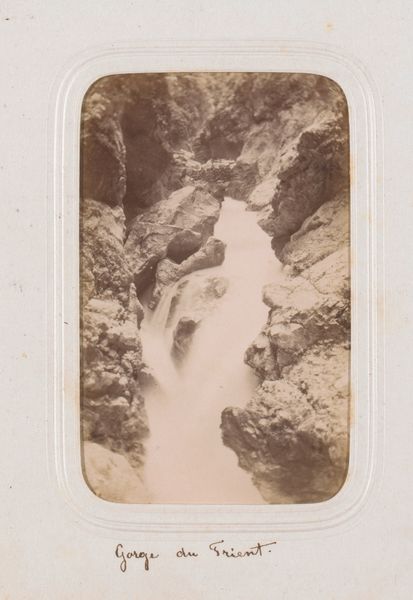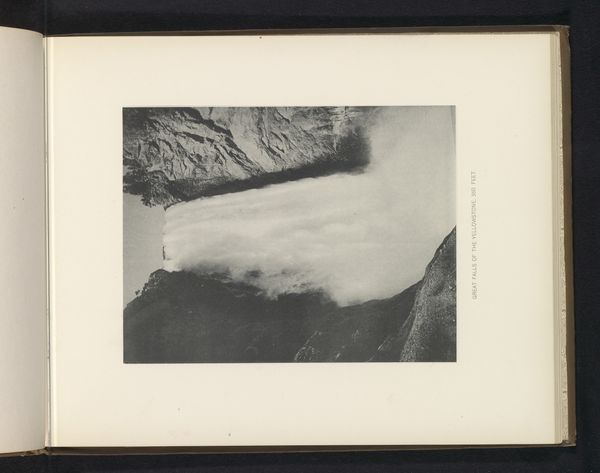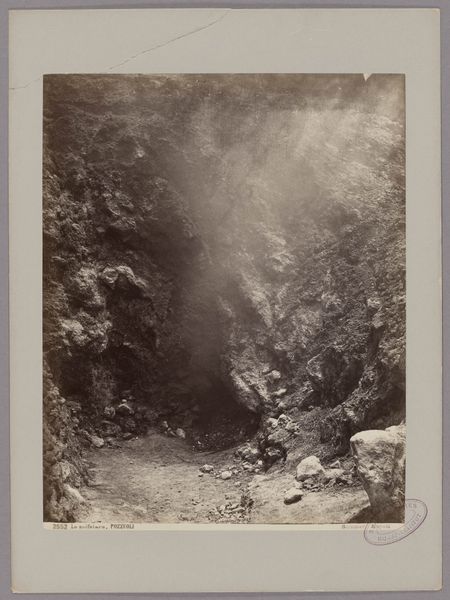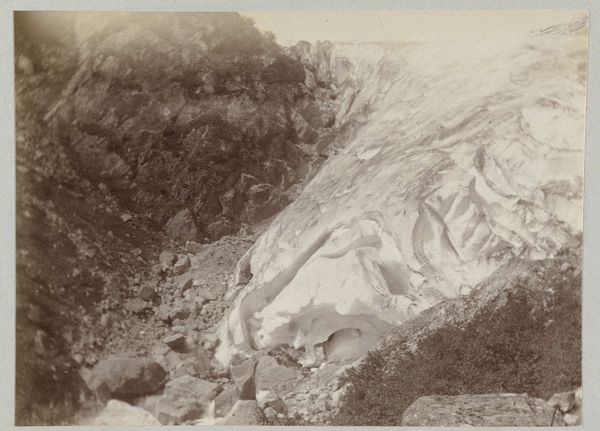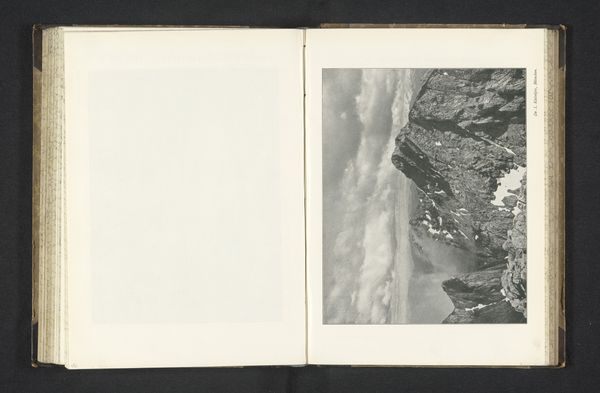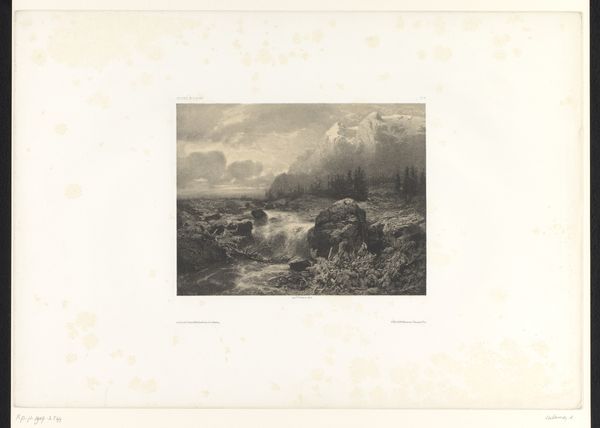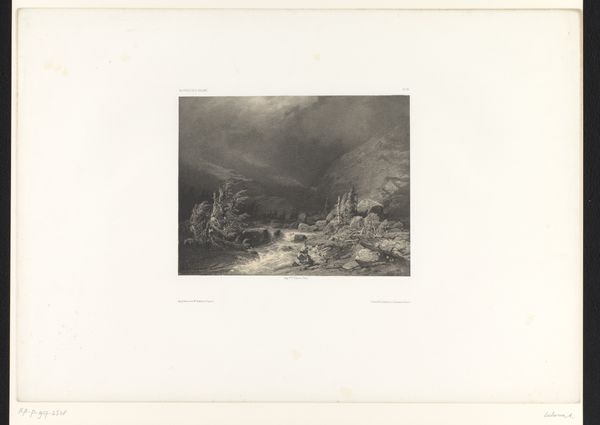
photography
#
16_19th-century
#
landscape
#
photography
#
realism
Dimensions: Image: 5 3/8 × 9 1/16 in. (13.7 × 23 cm)
Copyright: Public Domain
Editor: Here we have Eadweard Muybridge's "Crater of Volcano, Quetzaltenango-Guatemala," a photograph from 1875. It's a fascinating landscape, and I'm struck by how chaotic yet still the image feels, almost as though I’m peering into another world. How do you interpret this work? Curator: It's a powerful image, isn’t it? What strikes me immediately is the duality of creation and destruction so explicitly on display. The volcano, in many cultures, represents primal forces – both generative and devastating. Consider the plume of steam, that ethereal smoke against the harsh rock: Do you see the way it resembles a kind of breath or spirit emerging? Editor: I do see that now. The mist almost looks alive against the rocks. Is it the volcanic context that really gives this meaning, though? Curator: The specific context of a volcano is definitely important, layering a specific symbolism of potential devastation to a primordial landscape. But it also brings into play the visual symbolism of the sublime. How small does it make you feel? Consider, then, the act of photographing the volcano. What did it represent culturally to capture an image of nature's raw power at this time in the 19th Century? Editor: I guess that the sublime aspect represents something uncontrollable but knowable via observation. The mist against rocks certainly plays a big part in all that. Thank you! Curator: Exactly! It becomes a potent symbol of our relationship with nature, memory, and the passage of time, doesn't it? Thank you for seeing it with me.
Comments
No comments
Be the first to comment and join the conversation on the ultimate creative platform.
